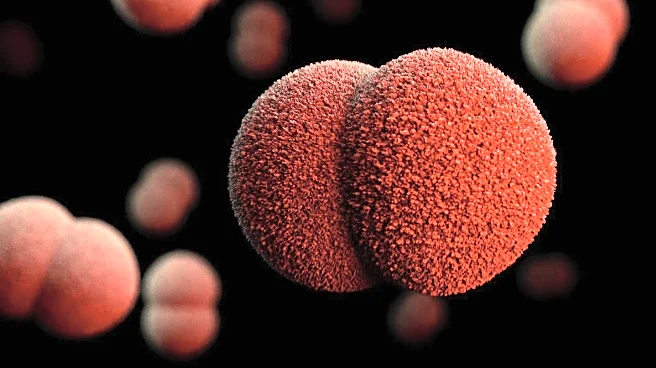What's Happening?
A recent study conducted by the ALWP/EBMT has found a low incidence of primary graft failure (pGF) in acute myeloid leukemia (AML) patients who underwent unrelated donor transplantation with post-transplant
cyclophosphamide (PTCy) as graft-versus-host disease (GVHD) prophylaxis. The study observed a 5.6% incidence of pGF, which is lower than previously reported rates for similar procedures using calcineurin-based anti-GVHD prophylaxis. The study attributes this reduction to improvements in HLA typing, donor selection, transplantation techniques, and supportive care. The findings highlight the clinical importance of PTCy in reducing pGF, a complication with high mortality rates.
Why It's Important?
The study's findings are significant for the medical community, particularly in the field of hematopoietic stem cell transplantation. The lower incidence of pGF suggests that PTCy may offer a safer alternative for AML patients, potentially reducing mortality rates associated with transplant-related complications. This could lead to changes in clinical practices and protocols, improving patient outcomes and survival rates. The study also provides insights into the mechanisms of PTCy, which may inform future research and development of GVHD prophylaxis strategies.
What's Next?
Further research is needed to explore the long-term outcomes of AML patients undergoing transplantation with PTCy. Studies focusing on improving engraftment rates, reducing infection rates, and minimizing transplantation-related toxicity are warranted. Additionally, the identification of risk factors for pGF could lead to more personalized treatment approaches, enhancing the efficacy of transplantation procedures.
Beyond the Headlines
The study underscores the importance of continued innovation in transplantation techniques and GVHD prophylaxis. It highlights the potential for PTCy to transform the landscape of hematopoietic stem cell transplantation, offering hope for patients with AML and other hematological malignancies. The findings may also prompt ethical discussions regarding access to advanced transplantation methods and the allocation of resources in healthcare systems.











